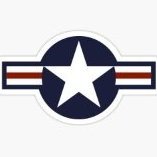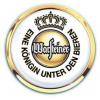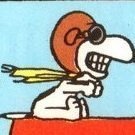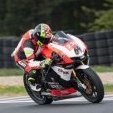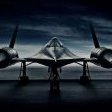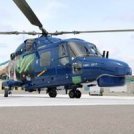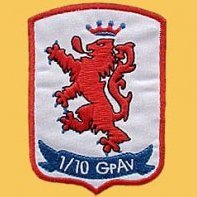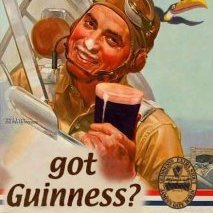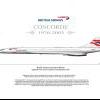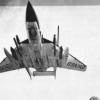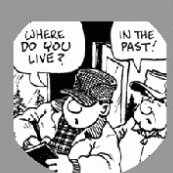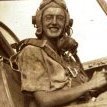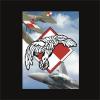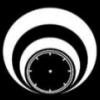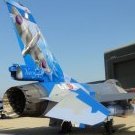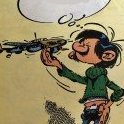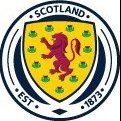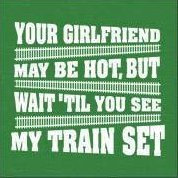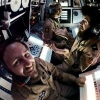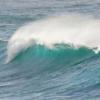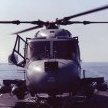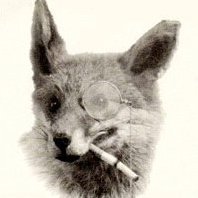Leaderboard
Popular Content
Showing content with the highest reputation on 26/05/19 in Posts
-
“The sound of bullets tearing through canvas, wood, and metal; the young pilot’s heart thumps in his chest. That last burst missed his goggled helmet by mere inches. He desperately throws the control column left and right, presses the rudder bar with all his waning strength, but his attacker is in a far better machine and is far more experienced. The enemy stays doggedly on his tail, hurling more lead at his machine. As the fight gets lower and lower, he prays that his luck holds out. Tearing canvas, water pouring from the holed radiator, a stuttering engine and the smell of fuel indicate that his trusty steed is mortally wounded. The fight is over. Finding the nearest clearing, the young pilot throws the groaning machine to the earth. It rumbles along the rough ground, now under its own control. Knowing he is now a passenger along for the ride, the young pilot tightens his shoulder harness in preparation for the inevitable sudden stop. His craft lurches of the bank of a small river, it’s shark-like nose ending its days unceremoniously dumped into the muddy water. The young pilot is dazed, but alive. What was terror now turns to anger with the release of the tension. He tears of his goggles, throws his harness off, and climbs onto the spine of his machine to take stock of his luck. As his victor flies over the scene, waggling his wings, the young pilot hurls his fist at the enemy; “You win this time”, he screams. He may have been vanquished, but he has lived to fight another day”. Hi all – I hope you don’t mind the melodramatic start to the post! This rough idea is the back story behind my latest completion, a small crash diorama based on the 1/48 scale Eduard Albatros DVa. This is a project that I’ve had in mind since way back in 2006 when I first saw Stan Stokes’ painting called “Gotcha”: This was my first time at modelling terrain, and modelling water. I made plenty of mistakes (many of them are obvious) but it was a good learning experience. The aircraft itself was modified to incorporate battle damage, in order to help tell some of the story.! The aircraft personal and unit markings are fictional, but broadly represent markings of the mid 1918 period. I included a four-leaf clover motif on the fuselage to help with the idea that the pilot’s luck has held out. The pilot is a modified figure using various bits and pieces I had in the spares box. I gave him a set of goggles that he’s holding in his left hand. I am definitely NOT a figure painter, as you can see Progress pictures of all aspects of the build are in the following threads: https://forum.ww1aircraftmodels.com/index.php?topic=10149.0 https://www.britmodeller.com/forums/index.php?/topic/235052386-vanquished/ Anyway, here are some more pictures: I welcome all feedback – as I said, this was my first time tackling terrain and water effects, so I’m sure there are plenty of tips out there that you all can give me. Cheers! BC30 points
-
This time Su-33 from Kinetic 1:48 The model of the highest quality can definitely recommend you this model. It is quite a demanding model in construction and painting, but it looks beautiful.26 points
-
Hi All Sharing my recently completed Tornado built from the Italeri 1/48 IDS "Black Panthers kit built into a GR1 from No 31 Sq based in Bruggen, Germany 1991. OOB apart from Pavla Resin Seats. Not one of my greatest models but posting as a sense of perseverance as this has nearly made it to the bin several times, mainly through my own incompetence but at least I've learned a lot along the way. I had planned to do a wrap round camo GR1 but made a mess of the camo as I tried to use Maskol, lesson learnt I cant get on with the stuff so its photocopied paper masks for me in future now Ive got the hang of the copier at work. i also has a problem with the final matt coat, I ended up with white patches, the only thing i can think of is I should have cleaned up after Microsol & Microset. Need to add a pitot as I seem to have lost the kit one at the eleventh hour Anyway its made it here and not to landfill, I'm reasonably happy with it and like I said I've learnt a lot along the way. Hope you enjoy, thanks for looking Darren19 points
-
Last week I managed to finish this Hasegawa TA-4F Skyhawk in adversary markings. It is one of several adversary Skyhawks I have built, and I started it more than five years ago. It was a straight forward build but it just got sidetracked by lots of other models. I sprayed it freehand with Xtracolor enamels and used Fightertown decals for the markings. This is the company she will be joining: Jens18 points
-
#14/2019 Tamiya M kit, Aztec decals, Eduard seatbelts, EZ Line for the antenna wire, MRP White Aluminium for the NMF. All nose trim, wing and fuselage stripes are painted. Although Aztec provides decals for all the outlines, my dad decided to paint them too. Build thread here https://www.britmodeller.com/forums/index.php?/topic/235053258-aztec-warrior148-republic-p-47d-thunderbolt-fuerza-aerea-mexicana/ The model shows an aircraft of the 201st Fighter Squadron of the Mexican Airforce shortly after WW2. The unit was established during the war and fought alongside the USAAF in the Pacific. The 201st is still an active duty unit, using Pilatus PC-7. DSC_0001 by grimreaper110, auf Flickr DSC_0002 by grimreaper110, auf Flickr DSC_0004 by grimreaper110, auf Flickr DSC_0005 by grimreaper110, auf Flickr DSC_0006 by grimreaper110, auf Flickr DSC_0007 by grimreaper110, auf Flickr DSC_0008 by grimreaper110, auf Flickr DSC_0009 by grimreaper110, auf Flickr DSC_0010 by grimreaper110, auf Flickr DSC_0011 by grimreaper110, auf Flickr DSC_0012 by grimreaper110, auf Flickr DSC_0013 by grimreaper110, auf Flickr DSC_0014 by grimreaper110, auf Flickr DSC_0015 by grimreaper110, auf Flickr DSC_0016 by grimreaper110, auf Flickr DSC_0017 by grimreaper110, auf Flickr DSC_0018 by grimreaper110, auf Flickr DSC_0019 by grimreaper110, auf Flickr DSC_0020 by grimreaper110, auf Flickr DSC_0021 by grimreaper110, auf Flickr DSC_0022 by grimreaper110, auf Flickr DSC_0023 by grimreaper110, auf Flickr DSC_0024 by grimreaper110, auf Flickr18 points
-
Hello, This is the HobbyBoss 1/48 AMX (A1-1 in the Brazilian Air Force). It is a subsonic attack aircraft, powered by a single non-afterburning turbofan produced by the Italian-Brazilian consortium AMX International, with Embraer as the brazilian participant company. Today, this version is being replaced by the “M” variant, which has an improved avionics/software package. Initial aircraft were delivered in the late eighties. This particular kit depicts an aircraft flown from Santa Maria AFB, (1/10 Aviation Group) in the tactical reconnaissance missions, plus the regular ground attack role. The weathering is minimum, since this machines are usually kept clean. The kit box contains some PE for the interior and rubber tires. No issues or putty was needed, except a little at the wings roots. Cheers18 points
-
I'm a rare visitor to the RFI area, but here is an MPM Meteor-Trent that I've been asked to make for Jet Age. We have a prop blade from this aircraft in our displays.18 points
-
Built for the 'Early Cold War 1947-1960 group build on FB EE Lightning F Mk1 by Simon Johanson, on Flickr Lightning ! by Simon Johanson, on Flickr18 points
-
While awaiting bits to dry on the Great White Beast, here is a Vac I did awhile back. A very old Combat Models Xp-67 Moonbat. It was a multiple case Guinness project. I don't think there wasn't a piece that didn't get a correction or repair. I hope you will enjoy. url=https://flic.kr/p/2cfi2z5][/url]13 points
-
Hi Here are a few of my favourite images from a very pleasant and varied season opener at Duxford. Thanks for looking. I'm back tomorrow, but the weather forecast is rather different!13 points
-
Hello Britmodellers, this 66-7554 was my first kitbash in 1977 and 1978 with some scratch. Trapper/Snoopy of 555.TFW in Korat 1971. Some guys made this jet too! Some D models like Trapper had tail stings with camo applied. It is so old, yesterday, when i made the first pics ever of this kit, i thougt that was a mistake, but wasnt, i checked, its true. Seats are greysome wrong, i didnt do much cockpit in the 70ties... Cheers, Tom12 points
-
Hello, My last model, an Mig-29 SMT Great Wall Hobby 1/48 upgrade to Mig-29 UPG of the Indian Air Force. the shades are approximate, I have not found the necessary information. Best Regards, Michel11 points
-
here is the Academy/Hobbycraft kit that is a little gem of a kit. i decided to do a diorama to help emphasise the size of the little kit. as usual painted with enamels and weathered with AK & AMMO products. thanks for looking11 points
-
This is Matchbox's Canberra PR9 original issue from c.1978. I built her to celebrate the 70th anniversary of the Canberra's maiden flight on May 13, 1949. The only mods I made were to open up and glaze the front and rear camera ports, add a towel rail type antenna and make the strakes around the rear lower fuselage more obvious (probably too much so). I added the wing tanks that were spare from a previous Airfix build. The fit was good except for the engine nacelles which are moulded with separate front and rears and I needed to do a lot of filling to get the joints smooth there. Decals are the original Matchbox ones. I didn't weather her as a) I am not very good at it and b) I have a pic showing her looking nice and clean. The decals are from the kit and held up well after 40+ years. Here she is with my other built Canberras - the silver one on the ground is the Airfix B(I)6 with an uncorrected nose (c.1993), the camo one is Frog(spawn) B(I)8 (c.2008) and the MSG/Black on is the Airfix B(I)6 with a Frog nose grafted on (2018). David11 points
-
That blue face still always makes me think that it's the 'lack of oxygen' emoji Giorgio! (I'm going to have to make a 'far too kind' emoji to reply to you if this keeps up!) It sounds completely unbelievable I know Johnny. If I told you an engine was mising for three days despite me having built the blighter, then that might give an indication of the chaos that has currently enveloped the work-space. I'd post a picture but then it would only turn into the ritual 'that's not messy/you should see my bench' threads and there's only so much human squalor a sensitive soul can bear.... 😆 Several weeks of their patronising 'Bad Panda' messages when finding you cannot access your own photographs (about twice a week on average) has not been a useful service, hence the ill-humour. People too. (Just saying.) I'm not an actual doctor Anthony. To any patients who may have been given the wrong impression I say this: 'Happy to refund your money in full.' 👨⚕️ Server update entirely understandable Heather, but doesn't explain the prior issues mentioned in my reply to Johnny above. You've been a bit quiet Massimo. All well with you I hope my friend? Well ye may whistle, son of Caledonia. Away and polish yer door-handles... -which are btw by far the loveliest fittings I ever expect to see on the forum. (Until your next set!) 😄 I do hope not Ian: . it is a rather taxing business this in that any excessive filing could easily result in Disasters of the Shape Kind. For how much longer I wonder Rob? I don't have any problem paying for online hosting on the 'no-free-lunch' principle (stands to reason, nothing is free unless leveraged by exposure to intrusive advertising and data-harvesting...), but am suspicious at how vulnerable we are to a ransom situation once a body of our stuff is up there for free. Or in my case 'when I'm supposed to be doing...anything really!' I would imagine you're on the money with option B Anthony. The forum servers only handling the posts/threads/indexing side of the affair - to host images, video &etc. on the server would be ruinously expensive in terms of the required drive space (as well as complexity). Despite my current irritation with their service, the interface for Flickr is well-designed and straighforward to use. I don't know about the limitiations of space currently under their free service but I would recomend them as a paid service. It might alternatively be possible to link from your OneDrive cloud account if you use the MS service as well. Or indeed: But free never seems to last.... I cannot imagine any circumstance in which you could be remotely described as 'crude' Mr. P. Mine own periodic coarseness and vulgarity are by contrast a source of regular reprimand from Mrs. B as being 'unhelpful'. Characteristically generous of you. Tbh, I deliberately bite off more than I can chew, less out of hubris than from a genuine curiosity to test one's self and abilities when confronted by a new (and not necessarily sane) creative problem. No doubt one of my genetic ancestors was the first to satisfy his curiosity about what the inside of a sabre-toothed tiger's mouth looked like, instantly regretting his inability to think through the process sufficiently vis-a-vis said feline only being asleep and not in fact dead. My handler Yi-Fu has instructed me to say: 'No'. They've already been 'lost'. I'll have to build replacements Benedikt. Clumsy of me. 😐 Slowly we are getting closer to being able to Close the Fuselage, so in anticipation of this the last few bouts of activity have involved touring the snag list for the remaining details requiring attention on the insides, starting with the folding seat across the aisle from the WO station: Due to the small contact areas between seat hing and frame I elected to solder that in place rather than trust to a weaker bond from glue. Not overly apparent in the photo below is the fact that I've attached the Vickers gun to the gun arm in its 'ready for ops' position. There's a section in the maintenance manual that helpfully outlines this procedure, also indicating that when not in imminent need of use, said Vickers was stowed barrell-down in some spring clips in the fuselage aft of the turret. The ammunition drums I'm not going to bother with as these are invisible down inside the walls of the fuselage so far that you'll have to exercise your imagination. Oil tank added to its brackets behind the firewall: Rack of air bottles now assembled and headphones attached to the radio set: I can confirm to @Ex-FAAWAFU ( who is the divil himself in such matters) that the headset is indeed accurately plugged in to the socket at lower right.... Also glued-in is the bomb-aimers cushion and floor inside the the noseso that final test-fitting of the framework could begin: Gleaming at the back on the inside of the frame dividing the windows from the rear door of the cockpit you might just make out one of the cabin fire extinguishers: According the the manual this is a No.3 type methyl bromide affair which, I understand, were of a brass appearance at this stage of the war. There's a nice illustration of it in this equally fascinating graphic from Flight magazine, published in February of 1940, ust a few short months before this mission took place: Having made mine from plastic runner turned in the Dremel, of course I had no brass paint so experimented by using a burnt sienna oil wash over white aluminium lacquer to approximate appearances. That seems to have worked better then I'd hoped, with the oil wash/lacquer combination giving a nice optical depth to the surface that I don't think a brass paint colour alone would have yielded at such a small scale as this. Getting - as they say - 'proper busy' inside here now that the last details are coming together: Time to start gluing the internal framework into place: No - we're not all buttoned-up yet. So far in this shot the framework has only been epoxied into place against the port side of the aircraft: I've clamped it all together like this in order to keep it correctly aligned whilst the glue cures overnight. I had to glue it to the port side first as there are still the WO and Nav's chairs to add, as well as the radio and oxygen rack and these can only be fixed into place on the ports side once the framework has been attached there first. Those will be the next items to be taken care of then, and we can move on, hopefully by midweek, to finally gluing the fuselage together and whacking the windshield on. Thanks for dropping by as always! Tony9 points
-
It looks like the NOVO releases of FROG's kits are going to give problems. It would seem they are less than stable at the best of times. I have quite a stash of FROG originals here. I'm happy to pass on any that are needed elsewhere. Don't be shy, If I have 'em and you need 'em, they are yours. Here's the selection.8 points
-
Edit: I've loaded some new images here with the diorama base - thought this was best rather than create a new thread... I wasn't that happy with the images that I posted so I've replaced a few of them also... This time with more accurate colours. Here is my latest: The kit is fine - an old one from Tamiya and is well known for it's many inaccuracies - which I only discovered after starting the build - there is aftermarket which can fix these but no longer available sadly. It went together fine except for the wing fuselage join but nothing too crazy. I'd go with the Eduard version if I was doing it again. It was my first ever 1/48 scale (from my usual 1/72) so it was a real eye opener in terms of the detail you can cram in - it also required a lot more work as any issues are much easier to see..! I riveted most of the surfaces which took an age as I repeatedly kept making mistakes, so everything would have to be filled and sanded down again (and again) which added days to the build. I also had trouble with the NMF underside - I used Alclad for this but found that it really doesn't like my oil washes - so this section had to be stripped and repainted a number of times. I ended up using Vallejo Metal colour which worked but wasn't as nice. I need to experiment more with how I can weather Alclad. I used an Eduard Interior PE set but still went with a closed cockpit as I think it a crime against airplane aesthetics leaving it open I added fuel lines and replaced the wing gun barrels with syringe needles. Paint is Tamiya acrylics and various oils - plus oil brushers from Mig. Pigments were used in the weathering. The base was molded from plaster of paris using waterproof sandpaper and a frame made from lego (yes that lego) The figures came from a tamiya luftwaffe ground crew set - this came with a kubelwagen too but thought including this would overcrowd things... The model depicts 'Black 4' of 10./JG 2 based at GroBostheim airfield, Germany - 1945 - The scheme is a bit speculative - as in there's no solid consensus on the exact colours used so I went with RLM 82 / 83 as I just like this scheme. Thanks for watching John8 points
-
Daimler Dingo scout car, Recce troop, 1st Armoured Regiment, Ist Polish Armoured Division, Falaise sector, Normandy, August 1944 Zvezda 1/100 kit. Build thread here: Dingo build Painted with Hataka, Akan and Citadel paints and inks. Decals by Plastic Soldier Company And finally, the penny shot. It's a custom or an old charter or something I thoroughly enjoyed that. When's the next one? Andy8 points
-
Masking removed. Think its looking good. Will step away for a couple of hours, as I have some household jobs to do.8 points
-
Airfix 1\76 panther tank. Here's my effort considering I don't normally do armour it's a nice little kit only after I had two goes at. the wheels8 points
-
This is one of my more recent builds. It was my second Tamiya kit to finish and it was well-engineered and thoughtfully designed. I started this Skyray in 2012, only to put it aside about half finished. I returned to it and finished it in August 2015. I took her out to the Cameron Airport for a little photo-session. We have a new hangar out there and I wanted to use it for a background. It was quite hot even in the time I was there, 10am-noon, building up to a heat index of 108 in the afternoon if I recall. The Douglas F4D was a carrier-based American fighter. The 1947 Navy requirement for which it was designed called for an aircraft that could reach 50,000 feet in five minutes, enabling it to intercept enemy bombers. Some interesting facts from Wikipedia: "Although it was in service for a relatively short time (1956-1964) and never entered combat, it was the first carrier-launched aircraft to hold the world's absolute speed record, at 752.943 mph,[1] and was the first United States Navy and United States Marine Corps fighter that could exceed Mach 1 in level flight.[2]It was the last fighter produced by the Douglas Aircraft Company before it merged with McDonnell Aircraft and became McDonnell Douglas." (https://en.wikipedia.org/wiki/Douglas_F4D_Skyray) Even though the Skyray didn't see combat, it's intriguing to imagine how that might have played out. It's first test flight occurred January 21, 1951, during the Korean War. A couple of it's early test pilots, Bob Rahn and Major Marion Carl, said this about the Skyray: " Rahn called the machine a "fighter pilot's dream", the best machine he had taken into the sky since flying the Spitfire. Its instability made it supremely agile for a skilled pilot, and Rahn claimed that he out-flew every Air Force chase plane sent up with him. Marine Major Marion Carl, one of the top test pilots of the era, flew the Skyray and claimed: "If we had this airplane now in Korea, I could just pop off the MiGs -- one, two, three." (https://web.archive.org/web/20070805072633/http://www.vectorsite.net/avskyray.html) The Skyray was also the only Navy jet fighter assigned to NORAD. "The F4D not only served with the US Navy and Marines, it also served under USAF command, though not with USAF pilots. One Navy Skyray squadron, VFAW-3 out of North Island in San Diego, was assigned to the North American Air Defense (NORAD) system under Air Force control, scrambling to intercept intruders entering the southwestern corner of the USA. The Navy Skyrays participated in Air Force interceptor competitions and walked away with their share of prizes. VFAW-3 Skyrays deployed to Naval Air Station Key West in Florida during the Cuban Missile Crisis in the fall of 1962, protecting US airspace from Cuban intruders. There were radar contacts with MiGs but nobody ever tried to force a confrontation." (https://web.archive.org/web/20070805072633/http://www.vectorsite.net/avskyray.html) The gull gray on top and insignia white underneath are Model Master enamel, and the wingwalks are Humbrol dark gull enamel. The leading edges were done with Humbrol matt aluminum. Paint was applied with my Paasche H using CO2. The paint scheme was deceptively simple at first but turned out to require a lot of masking, compounded by several mistakes on my part. The final finish is MM semi-glass acrylic clear and Future was used for a gloss-coat for decaling and weathering with Flory washes and pastel chalks. I used the kit decals for the most part with a few from my decal spares stash. EZ Masks were used for the canopy. It is pretty much all out of the box, with tape seatbelts added to the ‘pit. Originally, I intended to build her “clean” to show off the Skyray’s cool lines but in the end, I did gaudy her up with a full load-out. 😉 Looking back on my recent progress, I realize several were 1950s jets! Man, I just love the planes from this era. The Navy and the Air Force weren’t afraid of trying any new designs it seems now, and new designs were coming off the ‘boards at a fast rate back then. It doesn’t help that all these cool aircraft were coming along when I was a tender youth, zooming their plastic lookalikes around my room and yard! Thanks for taking a look at my “Ford” and as usual, I do appreciate your interest! Gary7 points
-
Not sure where to put this. I was looking for the BoB GB for next year but couldn't find it. So I'll stick the link here and perhaps others can paste it where it needs to be... Photos of aircraft wreck from the 1940-42 era. Now it is the Dail Mail so treat captions with a pinch of salt but the pictures are interesting.. https://www.dailymail.co.uk/news/article-7070249/Rare-photos-Nazi-plane-wreckages-littering-UK-fields-Battle-Britain.html Hope they are useful to someone...7 points
-
Well the “HMAS Vendetta” build is finally finished and I only lost decal, a very small Pennant number down around the stern. Dammed the convicts for adopting the US Navy pennant number system unlike the Kiwis who still used the proper numbering system aka the RN for Commonwealth Navies. Paints used were, Tamiya Fine Surface Primer (light Grey), Humbrol Acrylic Spray Grey 64 both were in a rattle can. Humbrol Emamel Matt Black, Matt White and Humbrol Acrylic 64 which I think I’ll throw out in the end. Sovereign Colourcoats RN16 (old stock). Aftermaket parts from Shapeways in form of the 4.5” turrets, the two twin 40mm Bofors and two single 40mm Bofors. Ladders were pinched from my two Flyhawk L Class Destroyer builds. A few little school boy errors during the build, but overall a very enjoyable build in the end. But the real joy of this build was having a few old boys from the pirates who served on one of the 4 Darings retelling a few dits, and during Vendetta’s time on the gun line during the Vietnam with USN and the technical side of the Darings in the RAN. Would like to have added railings and the catwalk between fw’d and aft superstructures. Here’s the history of the build for those who haven’t been following it.7 points
-
Thanks to the company of my friend Tomasz Bilkiewicz - Top Gun aka Bilmodel Makers, I am proud to present three submarine seasons of the Polish Navy from the period of their service to the Polish flag in NATO. The models are made of 1/350 scale resin. I heartily recommend them to all U-boat fans. ORP ORZEL III - Kilo class (Projekt 877E - Warszawianka) in Polish service since 1986 ORP WILK II - Foxtrot Class ex Soviet B-98 in Poland - 1987 - 2003 ORP SOKOL III - Kobben Class Typ 207 ex HNoMS Stord (S-308) in Polish Navy 2002 - 20187 points
-
Little H built a Spitfire based on Dusty from Planes And now with H’s Little Spitfire7 points
-
Love these BlitzBuilds. Have to work Monday so this has changed my normal build schedule. Eduard 1/144 Spitfire Mk. IXc painted as MJ250, 601Sqn RAF, Italy 19447 points
-
afternoon folks So, fillets.... they are all curved as you woulkd expect, some in multiple directions - I was hoping the dorsal fin was the last panel as the very tip of it overlaps the fuselage skin I can't add until the cockpit is in.. but no, it's the first panel down - I guess as it's the least removed in service.. ..to get an idea of the area, this is for a P51C without a dorsal fin - I couldn't find too much on one with a fin and all the resto pics I have of Lopes Hope do not yet have all the fillets fitted so some assumptions were made from what I could see that they are pretty similar to a 'D' model.. ..you can see curvature & shapes and the fittings that fasten them too ..I did the dorsal fin but forgot to take pics, so this is the upper forward fillet first.. ..a sheet is bent & taped down to start the forming process.. ..a ball pein hammer is used to gently beat it into shape, and helped with balsa rubbing blocks and hard wood coffee stirrers.. ..here I am trying to get it to conform to the leading edge and the curved part that runs out onto the fuselage.. ..after shaping a number of scaled templates were used to derive the shapes - these are side views so I have to allow for the shape as it curves away from the eye.. ..and soon all the fillets were in place ready for final shaping & smoothing - at the leading edge you can see where the panels overlap - by sanding away the overlap a perfect seam results - in fact on the full size one this is a butt weld which is finished on the outside.. ..after final finishing and finessing some of the edges, the fasteners were added - this was a vet labourious process as each one must be punched, then marked with an awl for the fastner, then flattened, then added - there are about 60 each side.. ..once the other side has it's fasteners (I can only do so many at a time without getting bored..), I will move along the underside to the air scoop & exit under the fuselage.. TTFN Peter7 points
-
I'm back again. Before breakfast this morning out came the super glue and repairs were attempted. Huge thanks for all the suggestions. I'm happy the wheel has been sorted and that I now have a little diorama once the ground crew figures arrive. So, once the glue had fully cured she was up on her legs. Followed by a swift flat coat again to seal in the weathering it was off with the masks.... there were a few areas of concern and some primer had some how got under the masking and the sponge on the inside of the canopy. It won't come off but it will have to do. Can't say I'm overly happy with the build throughout but I'm proud of the new skills and that I stuck at it regardless. In the words of D REAM things can only get better.... apparently. Here's a few pictures of the build as it is now. When the groundcrew arrive I'll take some better photos and get it in RFI. Thanks to everyone for their comments and their support throughout. I really do appreciate it. My skills are limited but I'm hoping I'm improving at every stage and that's all I can ask for. Enough of the waffling, here's the pictures:7 points
-
Decals on, weathered, and clear coated. On the home stretch of this very enjoyable build:7 points
-
Nice kit to build with only a bit of hassle at intakes and wing to fuselage join. landing gear is very intricate and a bit fiddly to put together unless you pre assemble before fitting. finished with Cutting Edge decals for main markings and kit deals for all others. weathered with AK enamel panel line wash and Ammo Dust effects and coated with Microscale Matt Varnish to deaden the shine on the Cutting Edge decals. thanks for looking7 points
-
. a beautiful kit to make with not a lot of pieces to bog you down. as usual painted in enamels and i used a set of Eagle Strike decals that are for the Blue Nose B*******ds of Bodney for the markings. Thanks for looking7 points
-
Here is my Airfix Hawk T2 of 25 Sqn at RAF Valley. Thought the new squadron would a nice way to start on the Hawk stash. Still find getting a nice gloss finish a bit of a battle and this is my first effort with the gloss black. Additions for this kit were the Air Graphics decals and baggage pod, aftermarket metal Pitot Probe and scratch built wing tip missiles and aerial behind the cockpit..7 points
-
This is my first Group Build, but I was impressed by the recent “Classic Airfix” so when this Frog one was floated I decided to have a go. I thought a little background would help as I am a geriatric “newbie”. I built my first aircraft kit back in 1957 - Airfix Lysander as I recall glued together with something thick and brown called Croid and left in silver grey plastic with the wheels and props coloured with Indian Ink. The next one was the Hurricane, and this time I used tubes of oil paint. I have been building kits ever since, usually not very well. In those young days I only went shopping with my mother so was limited to Airfix from my local Woolworths as there was no internet or mail order, and my only source of information was a small Ian Allan paperback on British Aircraft of WWII plus a booklet that came with one of my comics and actually showed me some planes of other nations. However, between 1960 and 1967 I started acquiring the small “War Planes of the Second World War” series of books by William Green and the occasional Airfix Magazine so I realised there were huge gaps in the Airfix range. I also found myself going past a good model shop on my way too and from school and discovered Frog and later Revell kits to fill some of the gaps, not to mention Humbrol paints and proper plastic cement! I have retired now and still have a dozen or so Frog kits and the odd Novo/Revell copies in my stash, so I thought I would start with the Me 410. I originally bought this kit when it first came out in about 1966. It has been stripped down in one of my spares boxes for years, In the picture the original is in bright blue plastic, unlike the “new” one” which I intend to build as a the A1/U2 model similar to the one in the RAF Museum collection and will be using Green's Warplanes of the Third Reich, Osprey's Luftwaffe Viermot Aces, a Kagero book and the Mushroom book on the 410 as references. I have bought some replacement gun barrels, and will add an instrument panel and some bulkheads and might box in the wheel wells and bomb bay a bit, but otherwise it will be OOB. I would love to imitate some of the beautiful detailing that some of the modellers have done in previous GB but I have neither the skill or patience and anyway my hands and eyes are showing their age these days. That's partly why I prefer older kits as there are a lot less parts and they are mostly of a size I can actually see – no more Ratio railway buildings with individual door knobs the size of a pin head! OK, that's the boring bit over - time to start building, if I can persuade my wife to put off decorating my study – probably have to buy her some plants for the garden to keep her otherwise occupied. More later – I promise to keep it brief and to the point from now on.6 points
-
This build is so old that I actually don't recall when I assembled this kit. Re-photographing and re-posting now for the sake of nostalgia. The text is from the time when I posted it somewhere, but that post is not dated. Another spawn from the Dungeons of Matchbox, with the usual colorful Ectoplastic treatment. After opening the box I realized I have seen a decal review of a civilian version, and following a fast search I order the set from Whiskey Jack Decals. I will elaborate on this matter later*. So there I was, battling valiantly again against the multi-colored Ectoplastic, but always with a smile on my face. This Stranraer model is really beautiful -the 30's definitely have some special charm- and builds easily. The only parts of the kit that made me frown were the struts. The central ones are way too long, and some of the exterior ones are too short. I found them difficult to position and the whole process of attaching the upper wing found me making good use of words that will make a seasoned rap singer turn pale. Rigging info is not provided, but there is a fair amount of images on the Internet, which helped me with it and some other details. Since I didn't have the lemon yellow suggested by Whiskey Jack Decals available, I used Utrecht artist acrylic, which of course unfortunately is meant not to flow, and diluted it with Model Master acrylic thinner. Several coats were laid down to build up a solid color that matched to my satisfaction the yellow on the fuselage side decals. The conversion to the civilian version, a Canadian machine of Queen Charlotte Airlines Ltd., requires some changes: the gun positions have of course to be deleted and blanked off and there are also changes in the engine/propeller area and other minor details. I have a single word for the after market decals: excellent. You have to be aware, though, that they have a continuous carrier, so you will have to carefully cut all the subjects and trim them. The decals must be handled carefully, and before cutting them a clear coat is suggested (I used Future, three coats, airbrushed). I tried them with and without decal setting agents, and I think you are safer without them, but you have to be patient. The colors are good as is the definition, but I encountered minor misalignments in the fuselage side decals (if you make on part of the image align with certain surface features, other parts are not aligned and vice versa, but I repeat: minor issues. The decals conformed well to all the surfaces and even endured some repositioning with remarkable stoicism. Another old Matchbox kit that provides a satisfying build, provided you are not obsessive-compulsive. *These decals -as far as I know- have been discontinued for ages now. (Note: there was a dolly, now missing, that supported the aft fuselage of this kit)6 points
-
An OOB build of the outstanding Academy F-8 with the Italeri 1/72 carrier deck and Fujimi USN deck crew set. had to cut out the slats and flaps and lower the nose oleo to get that "bent forward in full afterburner look!!" Mr Colour paints with Tamiya panel line accenter and pastel chalk dusting6 points
-
Italeri 1/48 C130K - Markings are mainly Xtradecal I flew in XV185 during an RAF Lyneham family day back in the eighties. They used to take the kids up for a flight and how some were not lost out the back when the ramp came down is still a mystery. Current status on XV185- scrapped 🙁 This was built over a decade ago and was badly damaged in transit from the UK to Oz. Not flak as such, just over stressing the airframe due to my packing. Fuel tanks detached, fin partially detached. Now partially repaired with undercarriage raised. It's a bit big so stands on its side on a shelf in the den. Today has been such a beautiful autumn day I thought I would give it an air, although I found the direct light a bit harsh for photography.6 points
-
6 points
-
Grumman F6F-5 Hellcat VF-83, USS Essex, Spring 1945 Kit: 1/72 Eduard Weekend 7450 Build thread: https://www.britmodeller.com/forums/index.php?/topic/235055707-a-cheeky-hellcat/6 points
-
Hi guys, I used the 1/72 AMK Kfir C2/C7 as a base to convert it to a Cheetah C. The Kfir kit is really well detailed and accurate, and made it very pleasant to work with. The forward fuselage was extended just behind the cockpit, but the nose wheel bay had to remain in the same location. Some vents, Formation lights, panel lines and radar warning receivers were added. The canards are considerably larger and has different sweep angles than the Kfir ones, so new ones were made. The ejection seat is quite nicely detailed, so I only added harnesses to it. The instrument panel was modified, as well as on-board oxygen generators on the bulkhead. The Cheetah C has an in flight refueling probe, which was made from brass rod bent to shape, and the nozzle was turned from a piece of sprue on my drill. The two dorsal intakes on either side of the spine and the ventral ones behind the main gear wheel well was made from plastic card. The tail fairing and exhaust was modified from an earlier Cheetah E project. The tail fin was more tricky, havind to remove the intake at the front of the fin. Also the fin needing a longer brake chute housing with a cable duct on the starboard side that leads to an EW unit, 3 x radar warning receivers added, two antennas and a reinforced access panel on the port side of the fin. A new chaff/flare dispenser fairing was made, with 6 x downward facing dispenser units. There is also a RAM-powered APU on the starboard side of the ventral fuel tank. The main wheels were replaced with ones from an earlier Cheetah project, that have larger holes. Antennas that go underneath the forward fuselage and along the spine were made. The Cheetah C has a single piece windshield instead of the two frames. The frames were filed down, then sanded with very fine wet & dry sandpaper, buffed to a shine, and finally dunked into some Future floor polish for a brilliant shine. I made molds of the parts, and did a test assembly so far. Cheers, John6 points
-
Thanks for the comments and likes Hull now painted and weathered plus legs added I've tried to make it look used. I don't think there would be much underwater growth. The discolouration below the waterline I did with a pin wash of various colours. Note I've stopped it short of the top of the anti fouling, I don't imagine there were many times she was fully loaded. Hope you like it . . . Kev6 points
-
Finished the Type 277 radar. The antenna is made from spare WEM 1/600 County Class flight deck netting trimmed to a circle of approximate size, pressed around a hemispherical former and then edged with stretched sprue. Details are then built up with offcuts of PE frame and Evergreen 30 and 40 thou strip. The base is slightly higher than the one shown in the diagram linked in #33 but otherwise it wouldn't clear the guardrails and more matches this image. I need to give it a light wash to bring out some of the detail I realised after I took this photo. I've also finished off most of the armament although have still to work out whether there were 20mm, 40mm or no guns on the poop deck. There are photos that seem to show all 3 variants at different times in here life. I am tending towards the 40mm largely because of this photo which has the late war aerial configuration and appears to show a Bofors right down aft but it is very difficult to tell. The forward 3 20mm Oerlikons are shown fitted to their guntubs below and in the raised midships sponsons (which is just dry fitted for now while I work out the other arrangements around there). The forward 40mm Bofors are also just dry fitted while I tackle the liferaft frames. I've made one of the midships frames (again also dry fitted for now) but looking back at the photos of the ship entering Malta that seems too large. I guess that's the penalty of using PE designed for a completely different ship. I'll have a play around to see what can be done. Finally I started on the weathering. I'm experimenting with AK Interactive rust streaks which a few friends have raved about. First impressions aren't convincing me but then I am building it up gradually. The one photo that I have that is definitely in the Far East seem to show that the rust was quite under control but then in contract, the photo taken in Malta (which must have been taken while she was on her way out to the Far East because the Type 277 radar wasn't fitted in all of the photos taken of her in the run up to and during Operation Overlord) show it to be much worse. I'm guessing that at some point between Malta and joining the Far East fleet when the blue camouflage was added, all of her upperworks were repainted.6 points
-
Thought I’d posted this. Holding here as that’s 12 hours since I started. RLM 80 mottles to be continued early tomorrow.6 points
-
I've made a start on a new model which will be something I never really do - a diorama of sorts but really it's two model aircraft. I've had to depart from my preferred 1/48 scale for this for various reasons but let's simplify it down to kit availability. The ultimate aim is to try to recreate a scene like this: I expect the readership is well familiar with the USAF's Combat Search And Rescue (CSAR) efforts which really came to maturity during the Vietnam war. The Sikorsky S-61R model in USAF service as the CH-3 was modified with long range tanks, refuelling probe, pilots' seat arm, winch and some defensive guns and became the HH-3E, nicknamed the Jolly Green Giant. They didn't and couldn't work alone though. They were still relative sitting ducks to ground fire, expected to fly into a hover in an area where a fast jet had been shot down. They flew in pairs, a high ship providing cover and a low ship which went in to pick up the downed airman/airmen. They usually had an escort of around 4 Douglas Skyraiders which flew under the nickname of "Sandy" which would provide heavy suppressive fire support for the helicopters. The whole operation was initiated, supported and coordinated by the crew of the Combat King however - the HC-130P would patrol and listen on the US military's radio frequencies monitoring ongoing air operations. As soon as they heard communications that suggested a friendly aircraft was in trouble the CSAR machine was warmed up. The Combat King crew would direct the rescue aircraft to the scene but also provided refuelling services to the fairly short-ranged Jolly Green Giants. The models then - I'm using a Whirlybird kit of the HH-3E which is almost entirely resin with a fret of photoetched brass. Unlike their earlier S-61N conversion which used a Revell donor kit, the HH-3E is a complete kit. Good then. The HC-130P is going to be provided by Italeri, with HC-130P conversion parts from David J Parkins' Flightpath, with photo etched details (mainly to get the flaps which, as can be seen above, were normally extended to allow the big Herc to fly slow enough for the helicopter to keep pace and take on fuel) and the correct Alison T56-A-15 engine nacelles from same. I still need the air to air refuelling pods from Flightpath and they're not available right now but David, if you're reading, I'll be keeping an eye on your website for them coming back into stock. It'll be a while before they hold up proceedings though. Never one to be content however, I have decided to attempt to make this much more difficult. I've never been impressed by clear plastic discs with blurry blades and the like, so to try to get a good impression of movement, I've decided to electrify this little ensemble. That's going to be easier said than done... Apart from any thing else, when you've actually seen things like the helicopter (or at least are familiar with its family members) things like relative RPMs begin to matter, within fairly broad reason. When photographed, the relative blur achieved by an camera will be more telling than just looking and since most people will see this through the results of a camera, I wanted to make a reasonable effort during the parts procurement process to try to get it close-ish. I've known 3 Hercules pilots, and have no way of contacting any of them so I've had to guess at what is probably a sensible propeller RPM for a C-130 flying straight and level with flaps down - and my guess is that 1200 RPM isn't going to look out of place. I ordered 4 of these for the Herc: https://www.ebay.co.uk/itm/DC3V-1200RPM-Micro-Mini-6mm-Planetary-Gear-Reducer-Motor-Precision-DIY-Robot-car/254151008187?ssPageName=STRK%3AMEBIDX%3AIT&_trksid=p2057872.m2749.l2648 These are approximately 17mm long and 6mm in diameter. The solid resin engine nacelles are, I believe, a benefit here since I can drill the nacelles in my pillar drill and get all the motors and thus all 4 propellers on the same axis. It would look dreadful if they all had different up/down/side thrust. Everything needs to be straight and aligned properly. On to the helicopter for now though. I needed to measure up what I had to work with, and that meant cleaning up the fuselage halves: The fit is pretty good, but there is a mismatch on the top of the fuselage to deal with later - but it doesn't affect what I need to know now: I have a bit of space to work with for the main rotor, but still the smaller the better - I don't really want a huge silver monstrosity gleaming through the cabin windows: The tailrotor however is a real issue: I have better data here (I think) about what speeds I want, but in truth that probably makes me less satisfied with whatever I get in the end! I have my father available who was licensed on the Sikorsky S-61N and has all of his Sikorsky course notes. I'd love to show some of the amazing reference material inside, but Sikorsky never miss an opportunity to sue people and the course notes have prohibitions on unauthorised disclosure all over them, so you'll have to take my word for the rest. Not knowing any S-61R drivers, but believing the powertrain to be very similar to the S-61N, my dad's course notes state that 100% on the mainrotor is 203 RPM. The same drawing shows that the power take-off for the tail rotor runs at 3030 RPM at 100% and that the 45deg gearbox at the bottom of the pylon is a 1:1 gear ratio. The final drive gearbox to the tail rotor itself has a ratio of 2.4375:1, making the tailrotor run at 1243 RPM at 100%. The best I could find that would fit in the fuselage for the mainrotor was this 242 RPM geared motor, measuring 16.5mm long by 6mm diameter: https://www.ebay.co.uk/itm/253771137237 That's at 3v so I've also ordered some little potentiometers to, hopefully, tweak that down a touch. Compromise is the key here. I considered asking someone to design and 3D print me tiny bevel gears and sit a motor in the pylon coaxial with where the transmission shaft would be on the real thing, but then I found these: https://www.ebay.co.uk/itm/DC3V-3-7V-4-2V-Ultra-mini-Coreless-Motor-3-2mm-12-2mm-Vibration-Vibrating-Motor/283101330780?ssPageName=STRK%3AMEBIDX%3AIT&var=583506556671&_trksid=p2057872.m2749.l2649 They are tiny little things 3.2mm x 12.2mm overall including the shaft which has a vibrating counterweight attached, so I've ordered 2 of them incase I ruin one. This should just fit in there. I expect it spins far too fast for what I want, but I will mock it up first with a potentiometer and see how low I can get it - but really I think I'll just need to take what I get as this really seems to be the absolute bottom end of what's readily available on the market just now. Since I had the stuff out, I made a move on the sponsons. Whirlybird provides sponsons with separate end plates; one with floats for the HH-3F "Pelican" used by the Coast Guard, one plain as used on some of the CH-3C utility versions and one with the pylon for extended range fuel tanks. The fit isn't great unfortunately. I spent a while trying to make sure the pylons were aligned and looked like they would be at the same angle of incidence as each other - I don't want one fairly long, spindly fuel tank pointing up and one down! I've had this stuff for a while but have never used it, so thought I'd give it a go It's like Milliput but seems a bit softer and easier to knead/mix than my packets of Milliput. That said, my Milliput has always been quite old whenever I've used it - mixing epoxy putties always seems a real faff so I'll use solvent types normally. For resin here though this is probably more suitable. Thanks for looking in. This won't be fast paced - and indeed I need to wait for motors to arrive, but I will work away at it along with my other projects. I'm not always in the mood for shaping / painting / photo etch / sanding / scribing so I like having different models at different stages of build and pick up whichever I'm in the mood for. I'm not a linear person.5 points
-
Hi, Having fond memories of building Frog kits in my youth I decided to participate in my first Group Build, but decided to keep it simple,so I started off with the Me 410 intending to follow it with the Bf 110G. However, as I am retired now and have perhaps more time than most other participants, and having drunk a little too much of the “Scottish Wine” as Shakespeare calls it (Whisky to the uninitiated), I rashly volunteered to finally attempt my ancient Shackleton MR3. I first came across this kit over 40 years ago in the window of a model shop in Chester – they had on display the South African version and I decided to buy one before long. However, as usually happens when I put off a purchase, Frog went bust so I ended up buying one several years later which came in a plastic bag with a copy of the Frog labelled instructions marked “imported by Hannants”. Most of the parts have fallen off the sprues which are labelled Made in the USSR so it is likely to be a Novo moulding. There were no decals but if it is Novo that is probably no great loss. The Shackleton was an Anti Sub/Maritime Patrol development of the Lancaster/Lincoln bombers crossed with the Avro Tudor transport and powered by 4 R-R Griffon piston engines with contra-rotating props and went through 3 distinct marks – MR1, MR2 with lengthened fuselage and repositioned radar scanner dome, and MR3 with many modifications including a tricycle undercarriage and tip tanks. There was also an AEW version of the MR2 with a large radome under the nose containing the radar salvaged from RN Fairey Gannet AEW3's. This kit is the MR3 with so called Phase II modifications though I am going to model the Phase III version of which more later. For many years it was the only Shack available but in recent years both Airfix and Revell have released new mouldings of the MR2 and AEW2 with an MR3 in the pipeline. It is of course rather crude, covered with raised rivets, and lacking internal detail, but reviews suggest it is fairly accurate in shape. Like most if not all planes, over time the Shack had ever more equipment added which raised the weight, so needed strengthened wings, undercarriage etc, which again also increased the weight so it became progressively more underpowered. The Phase III mods added more equipment, and subsequently, small Viper jet engines were added in the outboard engine nacelles of most aircraft to help with overload and particularly hot and high take-offs. I have always wanted to model that variant, but was put off by the lack of accurate information. However I have now purchased a resin conversion set for the Viper jets so I will have a go at fitting it. Of course it will not be entirely accurate as I gather the Phase III planes also had slightly enlarged wingtip fuel tanks (2 more gallons each?) and modified nose gear but as various other modellers have said it is an old kit so who cares too much about accuracy! The only other mods I might make are adding some bulkheads inside the fuselage. So, let battle commence! More later.5 points
-
A warm and heartfelt welcome to yet another Classic kit Britmodeller Group Build. This time we are honouring one of histories true legends of Plastic kit construction - FROG (Flies Right Off the Ground). This Group build will be running for just over four months (01 June to 20 October), so there’s plenty of time to jump onboard and build that classic Frog kit thats been lurking in your stash for ages. Here’s a quick note on the GB rules, however as always - if in doubt, check with the GB hosts first! What is eligible: 1. Any kit that was originally designed and issued by ‘Frog’. 2. Any kit that was boxed by ‘Frog’, however designed by another manufacturer (these are mainly Hasegawa kits from the late 60’s). 3. Any kit that can trace it’s original history to a ‘Frog’ mould (commonly called “Frog Spawn”) - these are mainly Novo, Novo Export, Chematic, Revell, Modelcraft, Eastern Express, Donetsk Factory, Gomix, ZTS Plastyk, Ark Models, AMT etc. 4. Any kit that has been reworked by a new manufacturer, however has clear evidence that it was ‘copied’ from an original ‘Frog’ mould - some Academy kits fall into this category. 5. In summary, any kit that at one point or another carried a FROG ‘F’ number - Scalemates can help you here. 6. Your kits can be built straight OOB or you can go to town with as many After Market products you so desire. 7. Modifications to the basic kit is allowed, however please use the majority of the kits main parts during the construction phase. 8. A WIP thread must accompany each build and once complete you can showcase your efforts by placing up to five photos in the GB Gallery. 9. Due to the vast volume of entries anticipated, an end of GB vote to determine an overall winner is unlikely to occur. In the hosts eyes, all GB entrants are winners so we should all be happy with that. 10. Feel free to encourage your fellow FROG modellers along the way by leaving as many nice comments and hitting the ‘Like’ emoji frequently! Special Addendum: Given the age / antiquity of the very earliest kits produced by FROG and the fact that there may be no available examples still below 25% assembly, a refurbishment build involving some of the constituent parts will be considered acceptable. The intention of the Classic Group Build is to stroll down memory lane and perhaps take a second look at some of these pioneering plastic kits from yesteryear. Although we certainly have a preference to showcase original Frog produced kits, we have opened the eligible criteria just enough to encourage as many modellers to join in as possible. These Classic GB’s are always great, so please stay within the rules, don’t take things too seriously and (as always) have a lot of FUN. Please feel free to ask any questions to @JOCKNEY, @Rabbit Leader or @vppelt68 should further clarification be required. I would like to use the Group Build banner below please feel free, it's now regulation size, and if you can read it without glasses you are either telling fibs or very lucky ! Cheers and happy FROG modelling, Pat, Dave & V-P.5 points
-
Hi guys this kit is an oldie but a goodie.. it went together really nice and was a great mojo booster. Unusually for me this was painted with Ak acrylics which were a joy to use. kit decals were used and small bit of weathering,more to be added later. thanks for looking .5 points
-
Howdy Folks - I'm a bit late - but hopefully I can finish this Armourfast Jagdpanther... With a total of 15 parts and very little detail to speak of I think I stand a chance. The instructions are non existent and there are no decals - but I'll see what I can rustle up in the time allowed. Actually this diagram has more detail that the chassis itself - but this is supposed to be fun - so let the fun commence - I'm off to 'trim the sprue'. Catch you in a short while - Steve5 points
-
I have spent a little time this morning. I'm now on to my second strip of Tamiya 12mm tape. The fuselage is done and as can be seen I am now masking up the wings.5 points
-
Well it may be the middle of the night - or maybe closer to dawn - but I'm having trouble sleeping - so time for a small update... I did a quick dry test of the wheels on the chassis... Well they all seem to touch the ground where they should - which is nice. So it was time for some actual 'glue' and the obvious thing was to get the gifted etch from @badger on the deck... I'm very pleased with the result and I would suggest an 'essential' for anyone building this kit. I also added a few bits to the deck - like these little hook things... I noticed at this point that the engine door needed some slight sanding on the left and right sides - go give an even gap all the way round. There was also a few covers to attach... I also got the periscopes and their covers fitted... Well it is 3am so I think I better try to get to sleep. Catch you later - Steve5 points
-
Last update before I head off for seaside fun 'n sun: Decalling has started with a slight mishap. Revells instructions would have you put the underwing star and bar on the port wing. As this was the hardest one with pylons I started here and applied it before realising. Luckily it came off without issues but it's a terrible thing, mangling a perfectly good decal..."Check your references, young grasshopper for the biggest fool is he who follows the advice of a fool..." All ended well, I had some better Xtradecal ones and boiling water settled them down nicely into the panel lines: A risque but not bawdy bit of nose art that looks surprisingly good. Well have fun folks, see ya on monday after Amazing Grace. Anil5 points
This leaderboard is set to London/GMT+01:00

